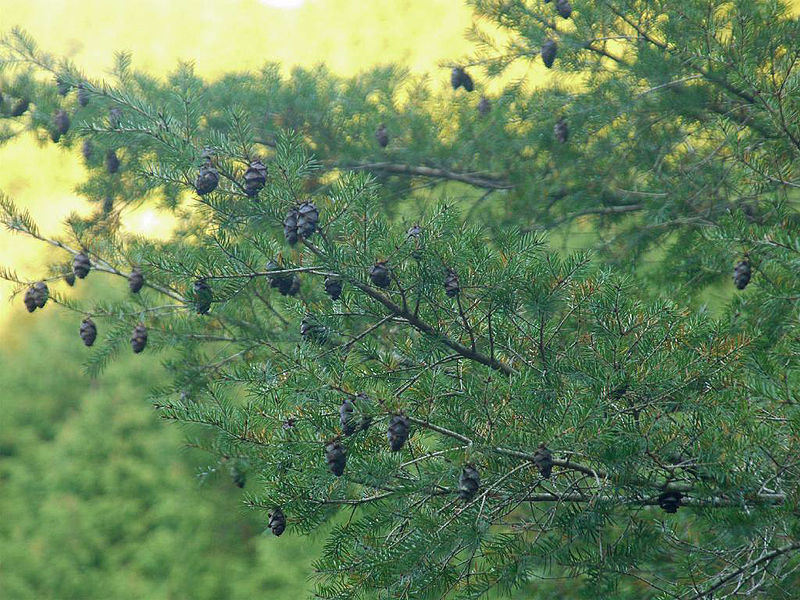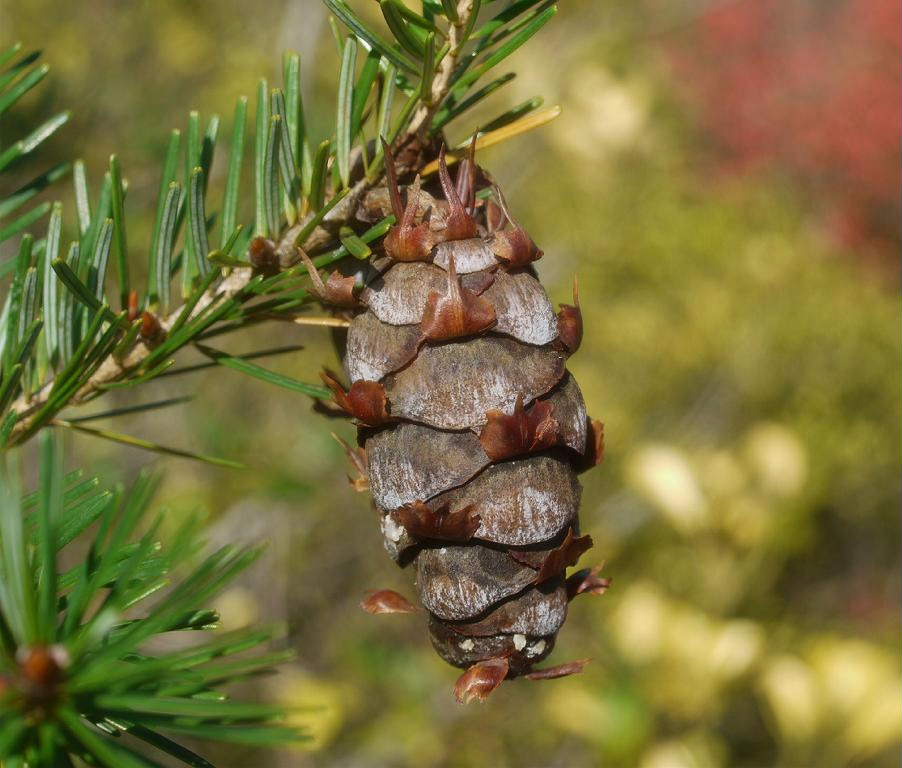
Pseudotsuga japonica, first described by Shirasawa (Bessner) in 1896 is commonly known as トガサワラ (Toga-sawara) in the Japanese language and as Japanese Douglas fir.
Description. Japanese Douglas-fir is a monoecious evergreen coniferous trees growing to 100 feet (30 m) tall. The trunk is clear of branches for about two-thirds the height of the tree. Bark is dark brown, longitudinally fissured, more or less separating into plates, becoming grayish on very old trees. Shoots pale yellowish brown, glabrous, with longitudinal grooves; second year's branches grayish. Winter buds very conspicuous, spindle-shaped as in other species, with shining brown, non-resinous scales.
Needles are spirally arranged, linear, straight or slightly curved, 0.6 to 1 inch (15-25 mm) long, 0.06 inch (1.5 mm) wide, notched at the apex, grooved on the upper surface from base to apex, shining green on upper surface, with two stomatal bands on lower surface, and 2 resin canals near sides.
Flowering occurs in April. Pollen cones are axillary on previous year's shoots, cylindrical, brownish yellow, with numerous stamens. Seed cones the smallest of the genus, terminal on short branchlets, ovoid or oblong-ovoid, 1.6 to 2 inches (4 - 5 cm long), 0.8 to 1 inch (2 - 2.5 cm) across, brown with glaucous patches when young, chocolate-brown at maturity; with 15 - 20 thick woody scales, margin minutely toothed or entire, each scale covered by a bract scale ca. 20 mm long and 4-5 mm wide with the three-lobed terminal portion strongly reflexed over the scale below, the central awn-like lobe narrower and longer than the short, blunt, lateral lobes. Cones ripen in October. Seeds shining dark brown above, pale mottled brown beneath, triangular-obovate, 0.24 to 0.35 inch (6 - 9 mm) long, 0.2 inch (5 mm) wide; dark brown wings that are broad, 0.4 to 0.5 inch (10 - 13 mm) long and 0.24 inch (6 mm) wide. It is most easily distinguished from other species in the genus by its hairless shoots and small cones.
Distribution. This species is native to Japan - Honshu Island (Kii Peninsula) and Shikoku Island (Kochi Prefecture), growing In temperate forests at 1,500 to 3,500 feet (500 - 1,100 m) elevation. This is a very rare species, with only small and scattered subpopulations of very slow-growing trees. The total population is not larger than 2,500 trees, there are no subpopulations exceeding 250 mature trees and there is a continuing decline.


